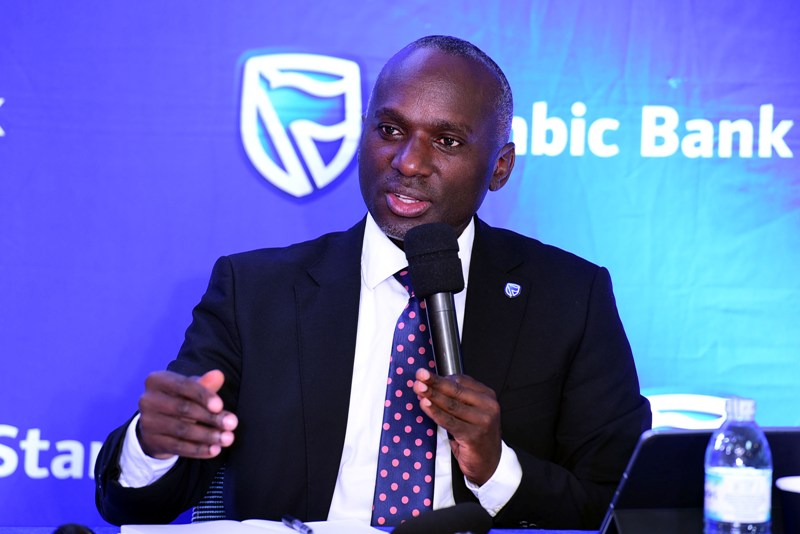Central Bank governor explains why lowering the cost of doing business in Uganda current economic situation requires a multi-dimensional strategy
Early this month, Bank of Uganda (BoU) Monetary Policy Committee (MPC) announced its decision to maintain the Central Bank Rate (CBR) at 9.75%, citing persistent global economic uncertainty driven by evolving trade dynamics and recurring geopolitical tensions.

The Governor, Bank of Uganda, Michael Atingi-Ego has said that significantly lowering the cost of doing business in Uganda requires a “multi-dimensional strategy,” highlighting the critical roles of energy, transport, labor, and other production costs.
During a media briefing on the Monetary Policy recently, the Bank of Uganda boos cautioned against relying solely on foreign exchange intervention to support exporters, stating that such measures risk stoking inflation or raising interest rates, necessitating “prudent policies” and careful treading.
Early this month, Bank of Uganda (BoU) Monetary Policy Committee (MPC) announced its decision to maintain the Central Bank Rate (CBR) at 9.75%, citing persistent global economic uncertainty driven by evolving trade dynamics and recurring geopolitical tensions.
The MPC’s decision reflects a cautious monetary policy stance as the nation navigates a complex economic landscape. The CBR band remains at +2 percentage points, with the rediscount rate set at 12.75% and the bank rate at 13.75%. The MPC believes this level is appropriate for controlling inflation while simultaneously supporting economic growth and socio-economic transformation.
Stable Inflation: Over the past 12 months, annual headline and core inflation averaged 3.4% and 3.9% respectively, remaining below the medium-term target of 5%. In July 2025, year-on-year headline and core inflation slightly declined to 3.8% and 4.1% from 3.9% and 4.2% in June 2025. This decline was primarily attributed to lower inflation in food crops and services, particularly passenger transport.
Inflation Outlook: The inflation outlook remains largely consistent with May 2025 forecasts, with slightly lower near-term projections due to a more stable exchange rate and declining global oil prices. Core inflation is projected to range between 4.5% and 4.8% in FY2025/26, stabilizing around the 5% medium-term target. This optimistic outlook is underpinned by cautious monetary policy, stable exchange rate conditions, improved food supply, and lower global oil prices.
Inflation Risks: Downside risks to inflation include a stronger shilling, subdued domestic and global demand, and further declines in oil prices. Conversely, upside risks stem from exchange rate depreciation, rising import costs due to trade barriers, increased government spending, and adverse weather conditions.
Resilient Economic Growth: Domestic economic activity has remained resilient, with high-frequency indicators showing continued dynamism in exports and imports. The Uganda Bureau of Statistics (UBOS) estimates real GDP growth for FY2024/25 at 6.3%, an increase from 6.1% in the previous fiscal year. This growth is supported by low inflation, exchange rate stability, export expansion, and strategic government investments, particularly in infrastructure.
Growth Projections: Real GDP growth is projected at 6.0–6.5% in FY2025/26, with further strengthening anticipated in the medium term. This outlook is anchored by sustained prudent monetary policy, targeted government initiatives to stimulate growth, rising agricultural output, and increased investment in the extractive sector, all aimed at the continued implementation of Uganda’s “tenfold growth strategy.”
Growth Risks: Downside risks to growth include falling commodity prices, global supply chain disruptions, tighter financing conditions, and adverse weather. However, easing geopolitical tensions, increased infrastructure investment, and improved business sentiments could lead to faster economic growth.
Policy Coordination: The Financial Year 2024/25 was characterized by significant macroeconomic stability, reinforced by effective coordination between monetary and fiscal policies. This synergy has helped anchor investor confidence despite a volatile external environment.







